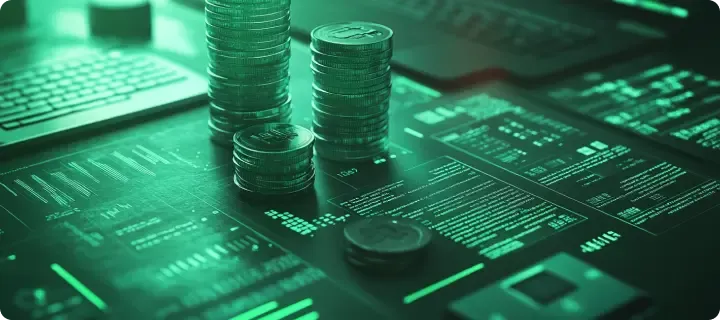In 2025, the concept of paying bills with crypto is rapidly shifting from niche experiment to practical solution. As stablecoins grow more mainstream and regulatory discussions intensify, individuals and businesses are increasingly exploring ways to bypass banks entirely. From rent and utilities to credit card payments, cryptocurrency offers a fast, borderless, and censorship-resistant alternative. Yet, behind the convenience lies a complex mix of technical hurdles, legal questions, and evolving tools that are reshaping how we think about everyday transactions.
Why crypto bill payments are gaining momentum
Money keeps changing fast. Many people now look for ways to make payments without banks. One way that is gaining attention is the option to pay bills with crypto. This method allows people to send digital money to settle everyday payments. In recent years, this trend has grown because it offers more freedom and fewer limits compared to traditional banks. People are learning that they can pay for many things with digital assets, from rent to electricity.

Many people prefer to pay bills with crypto because it can be faster than bank transfers. Traditional banks often take several days to process a payment. With crypto, payments can be completed within minutes. This speed makes it easier for people to manage their bills on time.
People in areas with weak banking services also see crypto as a helpful tool. It gives them access to services that were once hard to reach.
There is another reason why people now choose to pay bills with crypto. It gives them more control over their finances. In the past, people had to rely on banks or credit cards for every payment. Now, they can use digital wallets to make payments directly. This means no more waiting for bank approval or worrying about hidden fees. Many people find comfort in knowing they can manage their money on their own terms.
As more people around the world explore this option, they start to see how crypto can simplify daily tasks. Paying for utilities, rent, or even a phone bill becomes easier with digital money. While this method still faces challenges, its benefits continue to attract new users. Many now view crypto not only as an investment, but also as a tool for daily financial tasks.
Key benefits of paying bills with crypto
People are always looking for ways to make their lives easier. One reason many now choose to pay bills with crypto is because it allows for quick payments. In the past, paying a bill meant waiting several days for the bank to move the money. This process could be stressful, especially for those living paycheck to paycheck. With crypto, payments are processed much faster. In many cases, the money arrives in minutes. That makes a huge difference when deadlines are close, and there is no room for delays.
Another reason people prefer to pay bills with crypto is the lower cost. Traditional payment services often charge high fees, especially when making cross-border transactions. Crypto can reduce these costs. Many digital currencies offer lower fees, which means more money stays in your pocket. This is especially helpful for those who send payments internationally or handle frequent bills in different currencies. Over time, the savings can really add up, making crypto a smart option for many.
Freedom is also a major benefit. People like knowing they can handle their payments without banks watching every move. When they pay bills with crypto, they don’t need approval from any third party. This sense of privacy is very appealing to people who value financial independence. It’s not just about avoiding banks. It’s about having full control over your own money. People can send payments anytime, without worrying about business hours or bank holidays. This flexibility makes life easier.
More and more people are realizing these advantages every day. Once they start using crypto for their bills, many never go back. The ability to pay bills with crypto brings convenience, privacy, and financial freedom together. For many, this approach feels less like a trend and more like a better way to manage their daily money needs.
Current challenges and risks to consider
It’s true that more people now want to pay bills with crypto. But, let’s not pretend it’s all smooth sailing. There are still a few bumps along the way. The biggest one? It has to be price swings. Anyone who has used crypto knows this feeling. One moment, your digital coins seem just fine. The next, the price drops. Suddenly, the amount you planned to send doesn’t fully cover the bill. That’s a hard thing to deal with, especially if your budget is already tight. It makes some people hesitate before they pay bills with crypto, especially if they’re new to this way of handling money.
Then there’s the whole question about rules. Honestly, this part can get confusing fast. In some places, using crypto for payments is allowed. In others, the rules are blurry at best. Some people wonder if they’re even allowed to use it to settle bills. That uncertainty makes it harder to trust the process fully. Even though more governments are working on clearer rules, we’re still far from a global standard.
And let’s not forget about the technical side of things. Crypto payments aren’t always easy for everyone. There are wallet addresses, private keys, and all sorts of steps that can trip you up. Mess up once, and the payment could fail. Worse, you could lose your money. That’s enough to scare off people who aren’t comfortable with tech. To them, it feels like one mistake could ruin everything.
Still, even with all these risks, people keep trying. They see the benefits and hope things will keep getting easier. Many decide it’s worth it to pay bills with crypto, even if it takes a bit of learning along the way.
Tools and platforms enabling crypto bill payments
At first, it’s easy to wonder how anyone even pays bills with crypto. It sounds complicated, right? But the truth is, it’s not as confusing as it seems. The real secret lies in the tools that people use. They quietly handle the hard work behind the scenes, making it possible to connect a digital wallet with a company that needs to be paid. Without these tools, most people would feel completely lost.
Some services are really focused on making everything simple. They guide people, step by step. Pick a coin. Confirm the payment. Wait for it to go through. Suddenly, something that felt impossible becomes clear. It’s kind of funny how quickly it starts to make sense after you try it once or twice. People get used to it faster than they expect.
One thing that really makes a difference is how flexible these services are. Most of them let people choose between digital coins like Bitcoin, Ethereum, USDC, and USDT. That makes it easier to pay the way that feels right for each person. Some tools even help by sending reminders when bills are due or by setting up automatic payments. Little things like that make a big difference for people who already have too much on their plate.
Businesses have also found reasons to use these tools. Some services allow them to accept crypto from customers in many different places. They help manage everything in one place, from incoming payments to reports and records. Sheepy crypto offers businesses an option to accept digital payments, including USDC and USDT, giving them more flexibility than ever before. Thanks to tools like these, many people now see how easy it can be to pay bills with crypto.
How governments and regulators are responding
Honestly, it’s hard to miss how governments keep circling around crypto payments these days. It feels like every week, there’s another announcement or some new discussion popping up somewhere. They’re watching, that’s for sure. Some of them just sit back, not doing much yet, maybe waiting to see what happens. Others, though, they’re acting fast - sometimes a little too fast. Rules change in what feels like a blink, and people barely have time to react.

In certain countries, the pace of change is dizzying. Officials throw out new regulations, mostly to stop scams or make sure tax money isn’t slipping away. Sure, those goals make sense, but it can still feel overwhelming. What really stands out is how serious everything is becoming. Crypto payments aren’t just something for a small group of people anymore. They’ve moved into the center of bigger discussions about how money should work in the future.
Then again, not every government sees it as a problem to solve. Some seem curious, almost hopeful. They’re testing out new systems, looking for ways to make digital payments safer for everyone. There are places now where businesses can get licenses to handle crypto without worrying about breaking the rules. Other regions are working on tools to track digital payments more clearly. It’s strange, really, to think about how something that started so far outside the system is slowly becoming part of it.
But no matter how much changes, it feels like the answers are still out of reach. Some people think all these new laws will help. Others are sure it’ll only make things more complicated. Maybe both sides are right, in some way. Still, despite everything, people keep looking for ways to take care of their money differently. And yes, many of them continue to pay bills with crypto, even with all the uncertainty hanging in the air.
The future of crypto-powered bill payments
Funny thing, really. A while back, hardly anyone was talking about crypto for bills. It just wasn’t on the radar. It seemed like this weird, distant thing that wasn’t meant for everyday life.
But, well, here we are now. People are doing it. Quietly, sure, but still doing it. And somehow, it doesn’t seem so strange anymore, does it?
It’s weird how these changes sneak up on us. People try it once, then maybe again. At first, it feels odd, maybe even risky. But then it just… fits. It becomes part of the routine. That’s how it often goes with tech, I guess. It starts out weird, and then suddenly, it’s normal. It’s hard to say exactly when that shift happens. It just does.
And, honestly, once it feels normal, people stop thinking about it too much. They don’t need to overanalyze it anymore. They see new apps, better tools, smoother processes. Everything lines up without much fuss. And you start to realize - this isn’t going away. If anything, it’s only getting more common. That’s how these things tend to work, right?
At some point, this whole thing won’t even be something people talk about. It’ll just be there. Part of everyday life. No one will ask why or how it works. They’ll just use it, like they use a card or tap their phone at a store. It’ll be so normal that it won’t even seem worth mentioning. People will just pay bills with crypto like it’s the most ordinary thing in the world.
Quiet shifts, lasting changes
Sometimes, change moves quietly. What once seemed unusual slowly becomes familiar. It happens without much noise, without anyone really marking the moment it all shifted. Crypto payments are following that same path. What started as something experimental has steadily found its place in everyday routines. It isn’t about trends anymore. It’s simply another way to solve a common problem. More people now choose to pay bills with crypto, not because it’s bold or new, but because it works. The shift feels steady, and it shows no signs of slowing down.
Sheepy helps leading iGaming, FX, and E-commerce brands grow their crypto payments - trusted since 2022.